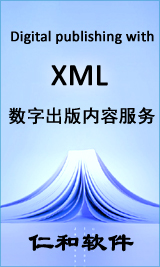Shuai Wang Koichi Tsuchiya Lei Wang Minoru Umemoto
材料科学技术(英文)
The deformed microstructures of a TiNi shape memory alloy were investigated in present study to clarify the deformation mechanism. It is found that the stress-strain curve was divided into three stages based on the deformation modes. The cause of martensitic stabilization effect was also interpreted by paying special attention to the deformed microstructures. Transmission electron microscopic examination revealed that at the early stage of deformation martensitic reorientation and compound twinning relieved some of the elastic strain energy stored in martensite, and this contributes to the martensitic stabilization effect. However, when deformation strain became larger, the density of dislocations increased correspondingly. Antiphase boundaries were also found. The degree of ordering was therefore decreased due to dislocations and antiphase boundaries.
So disordering was another cause of martensitic stabilization e®ect. In the middle stage of deformation martensitic stabilization was attributed to the two reasons above.
关键词:
TiNi shape memory alloy
,
transmission electron microscopy
,
ordering
,
dislocation
,
martensitic transformation.
梁迎春盆洪民白清顺
金属学报
建立了单晶Cu纳米切削的三维分子动力学模型, 研究了不同切削厚度下纳米切削过程中工件缺陷结构和应力分布的规律. 纳米切 削过程中, 在刀具的前方和下方形成变形区并伴随缺陷的产生, 缺陷以堆垛层错和部分位错为主. 在纳米尺度下, 工件存在很大的表面应力, 随着切削的进行, 工件变形区主要受压应力作用, 已加工表面主要受拉应力作用. 随着位错在晶体中产生、繁殖及相互作用, 工件先后 经过弹性变形---塑性变形---加工硬化---完全屈服4个变形阶段, 随后进入新的循环变形. 结果表明: 工件应力--位移曲线呈周期性变化; 切削厚度较小时, 工件内部没有明显的层错产生, 随着切削厚度的增大, 工件表面和亚表层缺陷增加; 切削厚度越大, 对应应力分量值越小.
关键词:
单晶Cu
,
molecular dynamics
,
dislocation
,
stress distribution
,
cutting thickness
郭永博梁迎春陈明君卢礼华
金属学报
基于大规模并行算法建立了单晶Cu纳米加工新型三维分子动力学仿真模型, 采用Tersoff势、嵌入原子势 (embedded atom method, EAM) 和Morse势分别描述刀具原子之间、工件原子之间和工件与刀具原子之间的相互作用. 研究了纳米加工过程中系统的温度分布及 其热效应的影响, 从位错和温度的角度对切屑形成过程和纳米加工表面的形成机理进行了分析. 模拟结果表明: 位错的扩展方向和切屑的堆积方向均沿着与切削方向成45°方向<110>晶向)运动; 系统的温度分布呈同心形, 切屑处温度最高, 同时在金刚石刀具中存在较大的温度梯度; 随着系统温度升高, 工件材料具有热软化效应; 切削速度和切削刃钝圆半径对系统的温度分布影响很大.
关键词:
单晶Cu
,
nanomachining
,
molecular dynamics
,
temperature distribution
,
thermal soft effect
,
dislocation
宋平新
,
赵志伟
,
徐晓东
,
邓佩珍
,
徐军
无机材料学报
采用提拉法(CZ)生长了质量优异的Tm:YAG晶体.部分晶片在1000℃的空气气氛中退火25h.借助光学显微镜、扫描电子显微镜(SEM),结合化学腐蚀法,对Tm:YAG晶体退火前后(111)面的缺陷特征进行了研究. Tm:YAG晶体(111)面的位错腐蚀坑呈三角形. 在偏光显微镜下观察了退火前后Tm:YAG晶体(111)面的应力双折射.同时应用高分辨X射线衍射法测定了晶体的完整性.实验结果表明,长时间空气气氛下高温退火有效降低了晶体中总的位错密度,提高了晶体质量.
关键词:
Tm:YAG晶体
,
chemical etch
,
dislocation
,
annealing
刘毅
,
林栋梁
,
汪德宁
,
陈达
,
陈世朴
,
刘治国
,
孟祥康
金属学报
利用透射电子显微镜研究了PST双相TiAl类单晶室温变形后的位错特征。发现除微孪晶和1/2<110]单位位错外,<011]超点阵位错和1/2<112]超点阵位错也参与了变形。<011]位错通常发生:[101]→1/2[101]+APB+1/6[211]+SISF+1/6[1 2]的分解,而1/2<112]超点阵位错则通常分解形成由1/6<112]部分位错构成的层错偶极子。1/2<110]单位位错通常是混合型位错。本文讨论了这些特征对材料室温变形的影响。
关键词:
PST晶体
,
TiAl
,
intermetallics
,
dislocation
,
deformation






